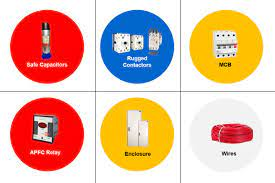MCB : Protection from overload & Short circuit
MCB now becomes a vital protection device. It is advised to use MCB in every electrical installation to safeguard you and your equipment against overload and short circuit. Know the Basics of MCB The full form of MCB is Miniature Circuit Breaker. MCB is an electro-mechanical device which protects the electrical circuit in case of overload and short circuit faults. MCB detects the fault condition and automatically switch off to interrupt the circuit current and it can be manually switched ON after removing the fault. The Differences between a Fuse and MCB There are significant differences in a fuse and an MCB . When there is an overload, the metal which constitutes a fuse melts; thereby creating a break in the power supply. The MCB simply switches off the power supply to prevent any adversity caused by an electrical fault. This is the major advantage which MCB enjoys over the fuse as it only needs to be reset, whereas the fuse needs to be ...





